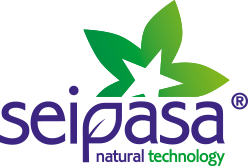Circular economy and agriculture: keys to the Brussels-driven European Green Deal in the 2030 horizon

The circular economy is here to stay and is set to bring about vast transformations in all sectors, including agriculture. That is what is said in the so-called European Green Deal, the map of EU actions aimed at driving sustainability, reducing impacts on the environment and guaranteeing food safety. The goal is to transform the agricultural and food model in Europe and align it with environmental protection and the fight against climate change.
The EU roadmap involves implementing the "Farm to Fork" strategy, a series of actions that, with a time horizon of 2030, aim to fully introduce sustainability into the EU economy and, at the same time, reinforce the position of agricultural biotechnology firms, such as Seipasa.
The question is why now? and why is the EU committed so intensely to reinforcing the role of the circular economy in agriculture? The answer lies in the crisis that has resulted from Covid-19 and in the reality that the pandemic has revealed, especially in the agro-food industry. If this crisis has taught us anything it is that this sector plays a strategic role in the balance and needs of society. The food chain is crucial, but it also pollutes and takes up enormous quantities of natural resources. The aim of the European roadmap is to make it more sustainable, not only from the point of view of the environment but also in its social dimension, especially in terms of generating fair economic returns for all the players in the chain.
The European Green Deal: key aspects
The "Farm to Fork" strategy proposes specific measures to reduce the use of chemical pesticides by 50% in the next 10 years. The European Commission will also take measures to reduce the use of fertilizers by 20% by 2030 since it considers that the excess in nutrients in the environment is a major source of air, soil, and water pollution.
The Community Executive aims to plant 3,000 million trees in the European Union and to drive forward the development of organic farming with the goal of 25% of total EU farmland being used for organic farming by 2030.
Apart from legislative issues, the "From Farm to Fork" strategy within the European Green Deal proposes other measures aimed at raising awareness among citizens about the importance of reinforcing the sustainability of the food system through better food labelling or by reducing food waste.
In practice, the agro-food strategy promoted by Brussels for the next decade offers a head start for companies that, like Seipasa, have a robust structure and ample experience in bringing together biotechnology, innovation and investment in phytosanitary registrations to develop new botanical and microbiological solutions fully aligned with efficacy, sustainability and the strict EU regulatory framework.
To implement measures such as reducing chemical pesticides to combat pests and diseases in crops, the Community Executive must take measures to facilitate the entry into the market of new solutions developed from active biological substances. However, to do so it is also necessary to advance towards a greater alignment and unification of criteria that lead to the registration of phytosanitary products at EU level. At present in the EU, active substances are authorised at community level but phytosanitary products that contain these substances require individual authorisations by each of the member states. At grassroots level this delays the approval of new solutions with the Registry Authority and prevents farmers from being able to use these new tools to comply with EU requirements.

